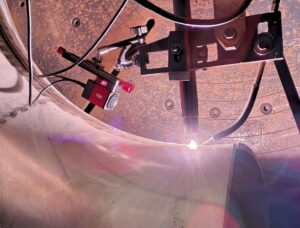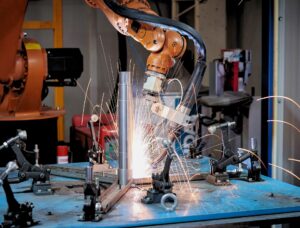Why smart welding camera systems are redefining weld quality assurance
In this blog, we’ll compare welding cameras vs traditional visual inspection methods and explore how smart camera systems are transforming weld quality assurance with real-time monitoring capabilities. When it comes to ensuring weld quality, traditional visual inspection methods have long been the industry standard. Certified inspectors visually assess each weld post-process using magnifiers, gauges, and experience-based judgment.
But in today’s high-stakes, precision-driven environments, welding cameras are fast becoming the preferred tool—offering unmatched real-time weld monitoring system, digital accuracy, and record-keeping capabilities. Let’s break down how welding cameras stack up against traditional visual inspection and why more industries are shifting toward digital monitoring.
Traditional Visual Inspection: Still Valuable, But Limited
Visual weld inspection is often used as the first line of defense in quality control. It involves checking the weld bead appearance, measuring dimensions, and spotting surface defects like undercut, porosity, or cracks.
Pros:
- Low cost
- No complex equipment needed
- Backed by industry certifications (e.g., AWS, ASME)
Cons:
- Subjective — relies heavily on inspector experience
- Only works after the weld is complete
- Surface-level — can’t detect subsurface or dynamic weld issues
- Risk of human fatigue or oversight
- No real-time feedback for welders or operators
In short: traditional inspection catches what already happened, but it can’t help prevent issues in real time.
Welding Cameras: Real-Time Insight and Digital Precision
Modern welding cameras, also called arc monitoring cameras, provide a live view of the weld pool during welding. They’re designed to withstand intense arc light, heat, and spatter—making them ideal for continuous monitoring, quality control, and process optimization.
Key Advantages:
Real-Time Monitoring
Operators and quality teams can view the weld as it happens. This means problems like poor fusion, porosity, or arc misalignment can be identified and addressed instantly, not hours later.
Consistent, Objective Data
Welding cameras eliminate the guesswork. Video and images are digitally captured and timestamped, offering repeatable, measurable insights for audits or training.
Enhanced Safety
In hazardous or confined environments (e.g., nuclear plants or offshore rigs), cameras allow remote monitoring, keeping inspectors and welders at a safer distance.
Ideal for Automation
When paired with robotic or automated welding systems, cameras can track and adjust the weld path in real time—helping reduce weld defects and downtime.
Record and Review
Unlike visual inspection, welding cameras can store footage for later review, client documentation, or failure analysis. This supports root cause investigation and continuous improvement.
Side-by-Side Comparison
| Feature | Traditional Inspection | Welding Cameras |
| Timing | Post-weld | Real-time |
| Subjectivity | High | Low (objective visual data) |
| Defect Detection | Surface only | Surface + dynamic process issues |
| Documentation | Manual | Automatic image/video logging |
| Safety | On-site presence needed | Remote access possible |
| Integration with Automation | No | Yes |
Real-World Impact
Industries like aerospace, shipbuilding, oil & gas, and nuclear power are increasingly relying on welding cameras because of the tight tolerances and regulatory standards involved. When a weld failure could mean millions in damage—or worse, a safety catastrophe—real-time visibility is no longer optional.
A welding monitoring system doesn’t replace skilled inspectors—but it enhances their capabilities. It allows for faster correction, better data, and long-term traceability that no traditional method can match.
Final Thoughts
The case for digital monitoring in welding is clear: while traditional inspection still plays an important role, welding cameras are pushing the boundaries of what’s possible in quality assurance.
If you want to prevent defects—not just detect them—investing in a welding camera system is a smart move.
Ready to explore real-time welding visibility?
At Mecaweld, we help manufacturers integrate camera systems that elevate weld quality, safety, and productivity. Contact us for a customized solution for your welding application.



